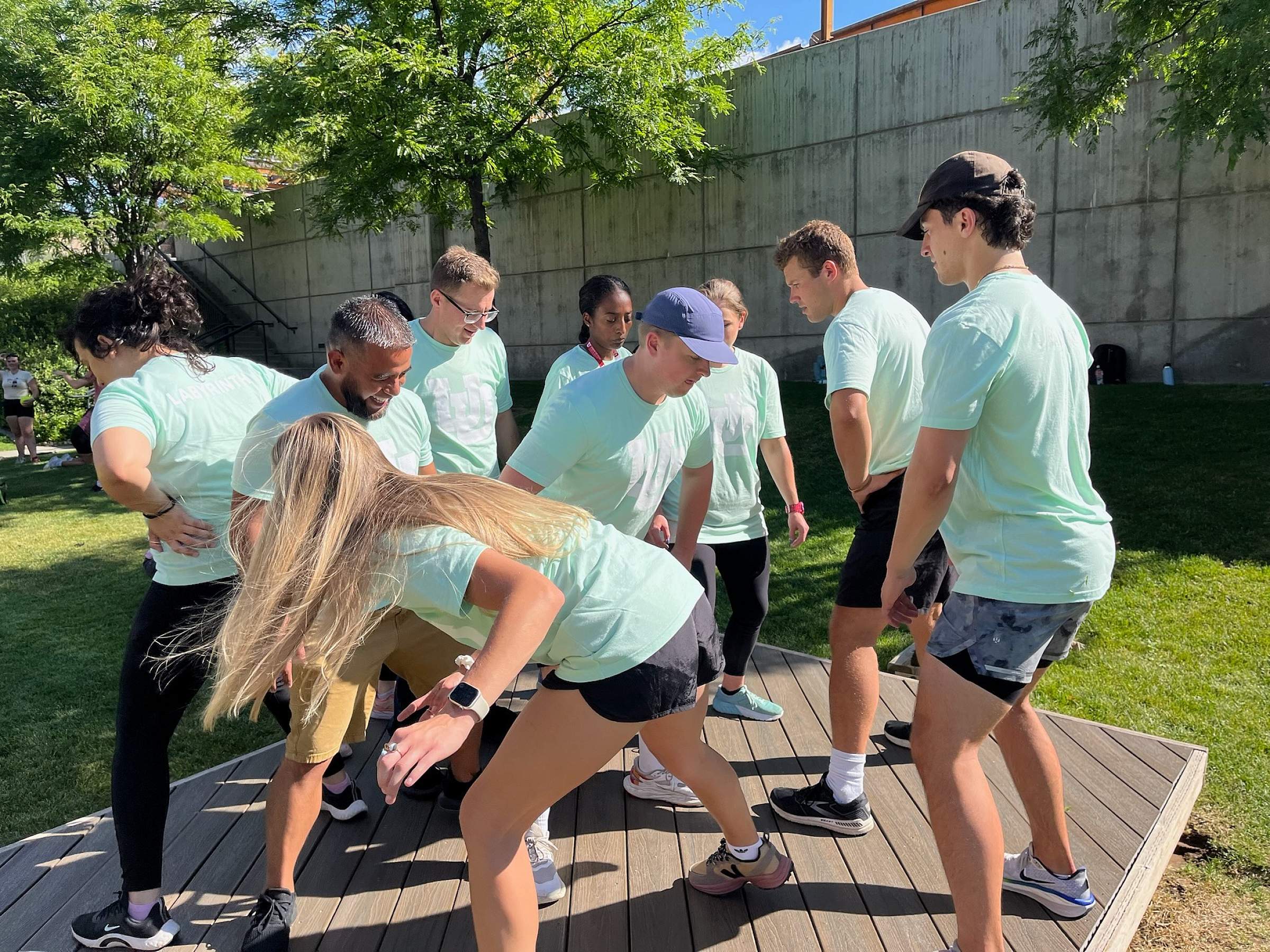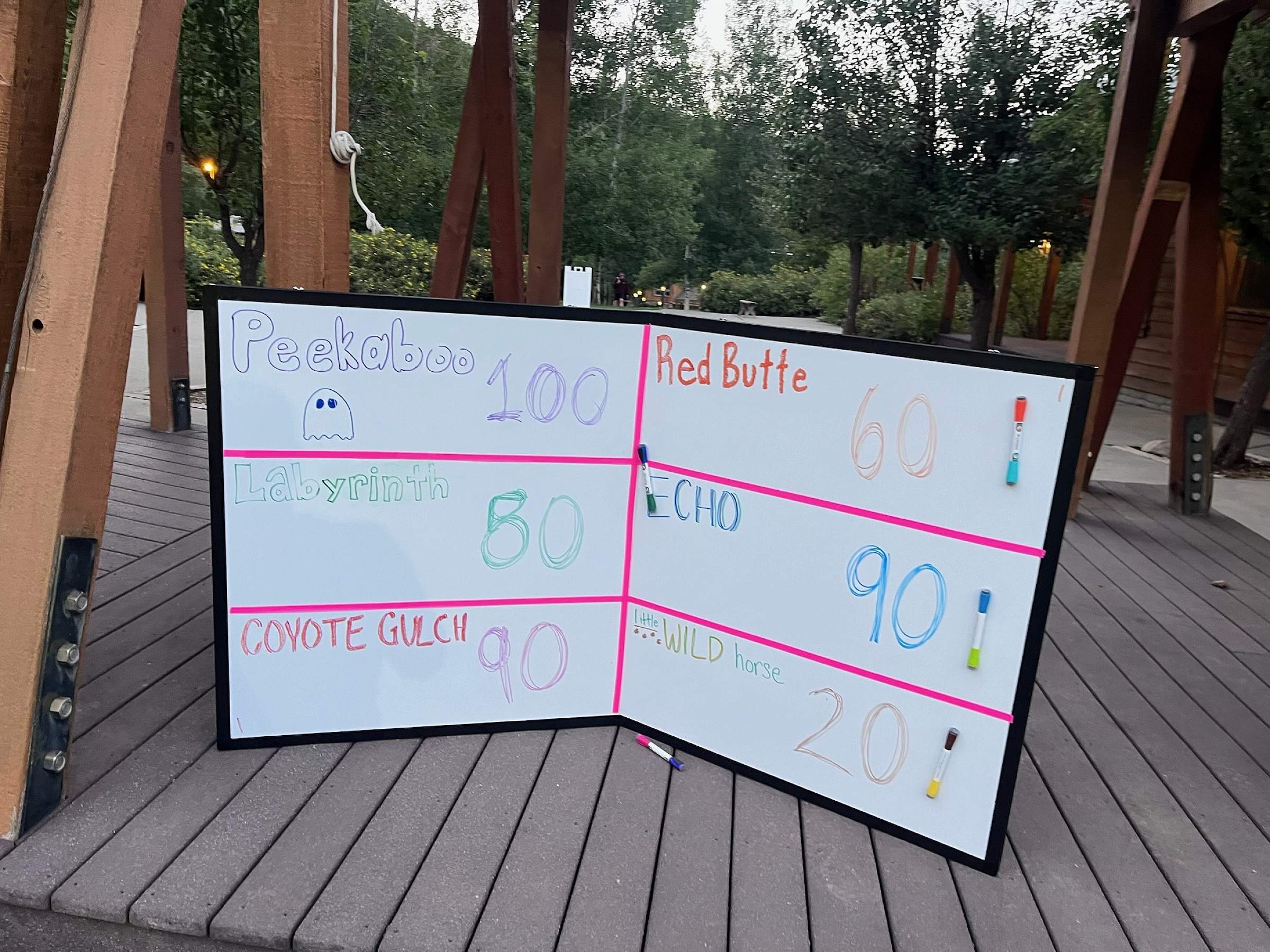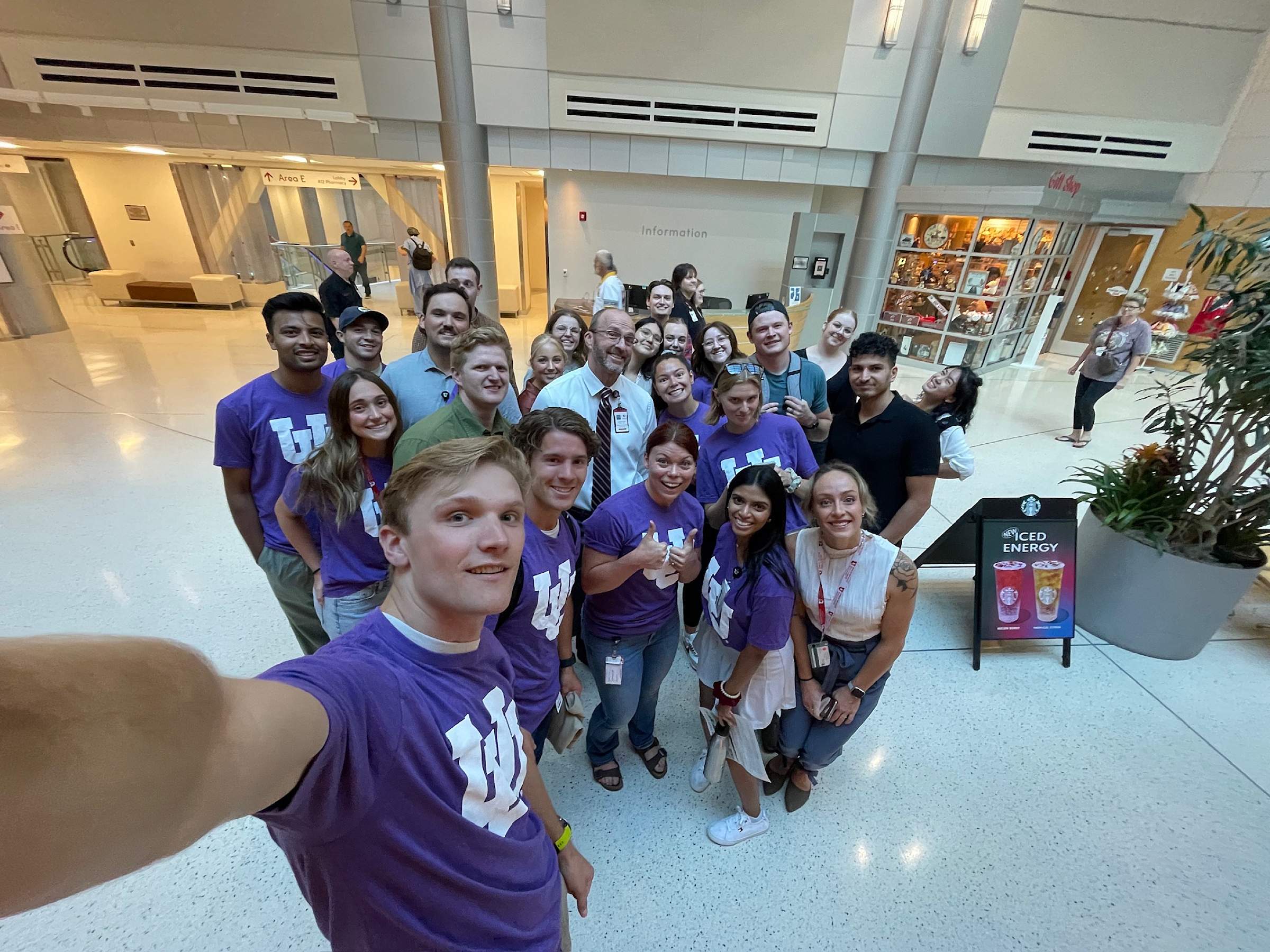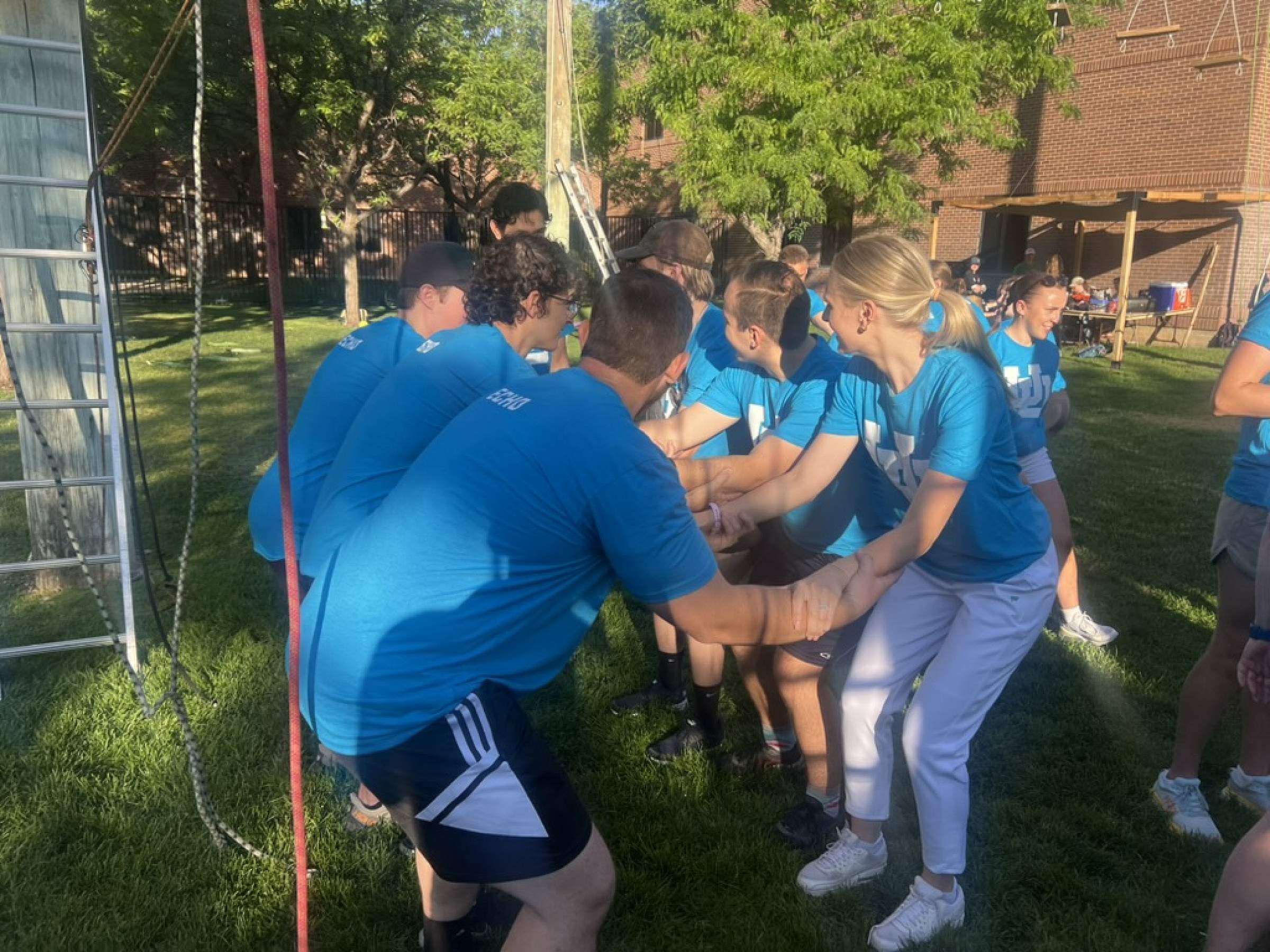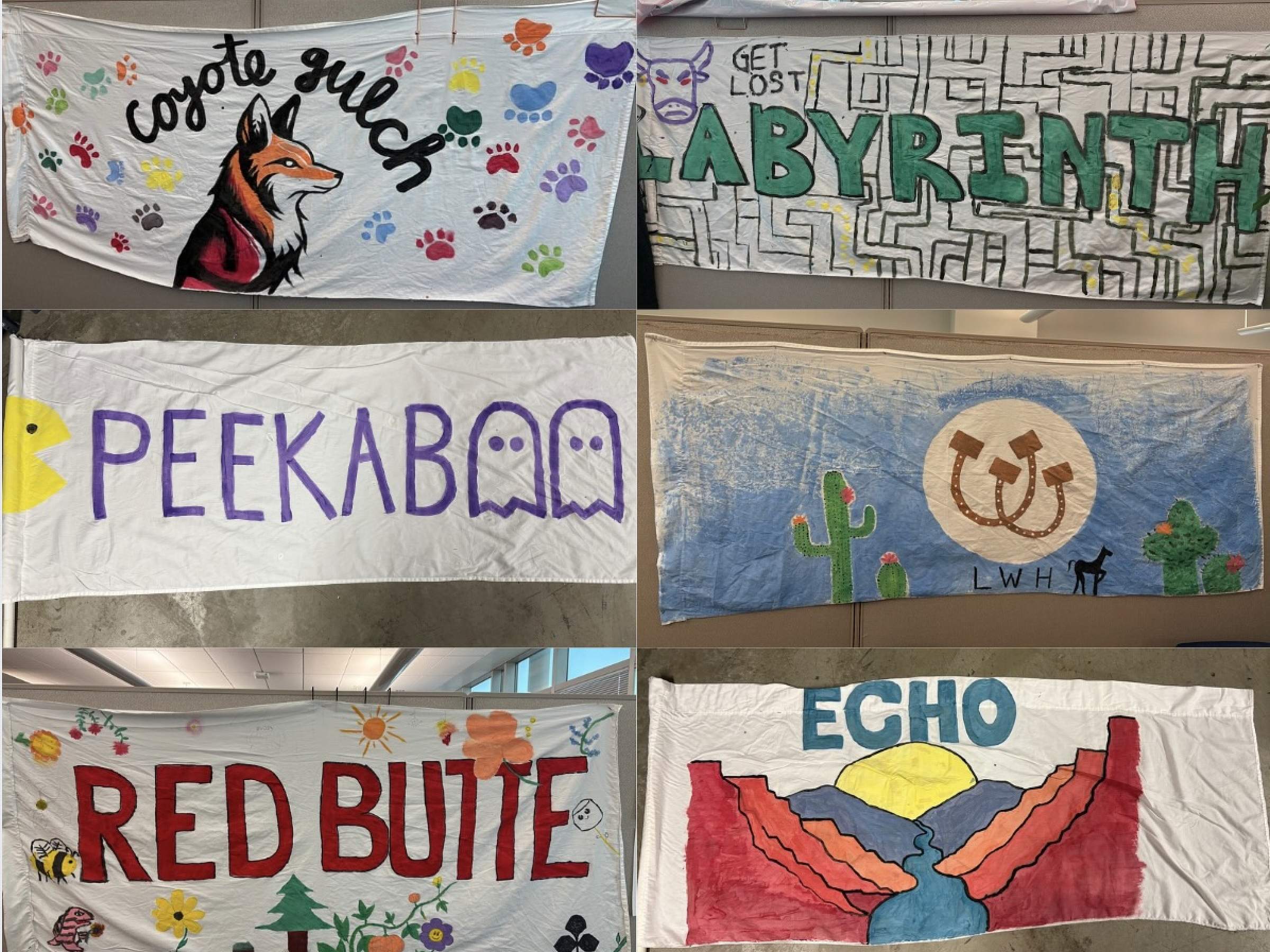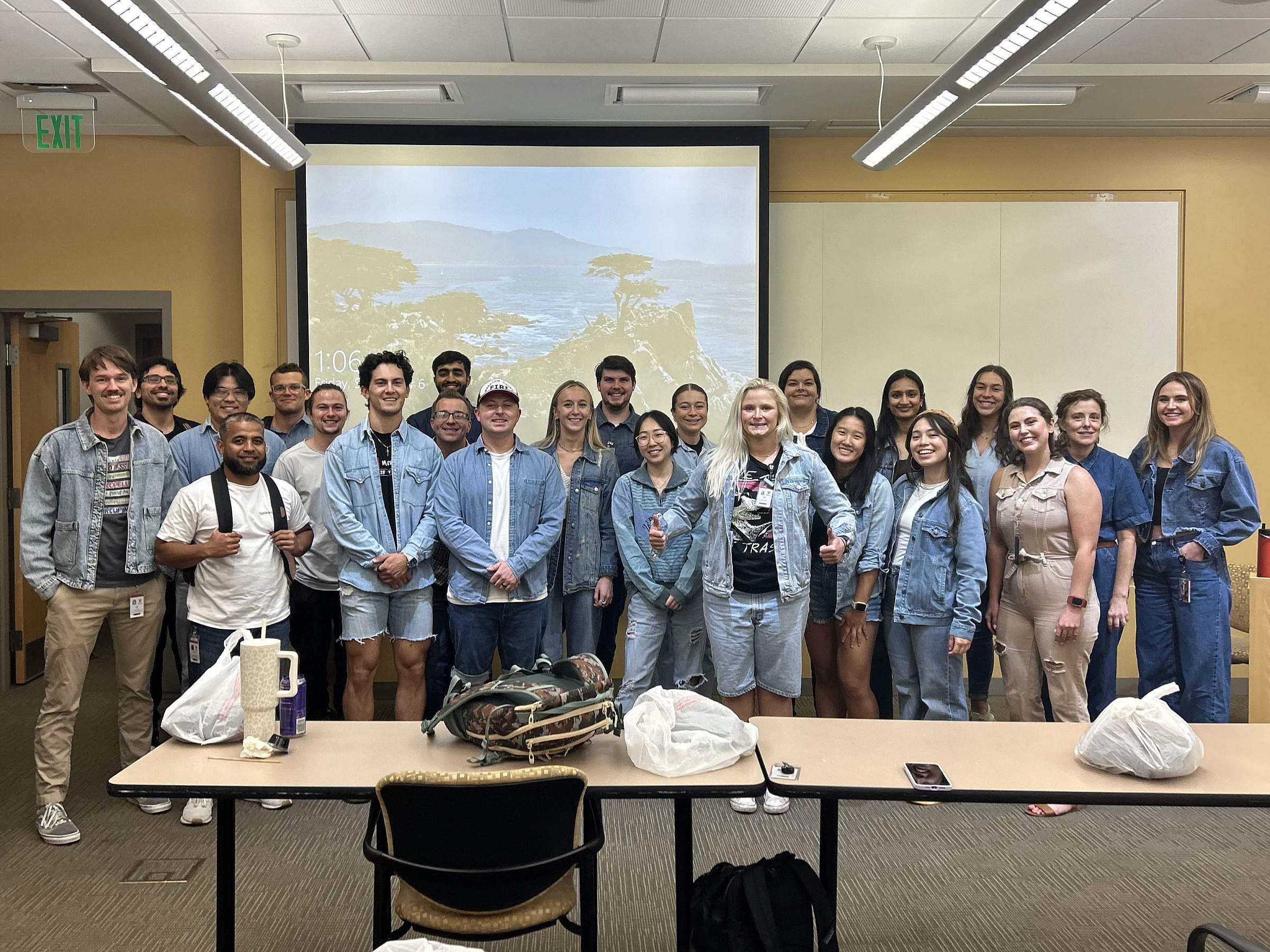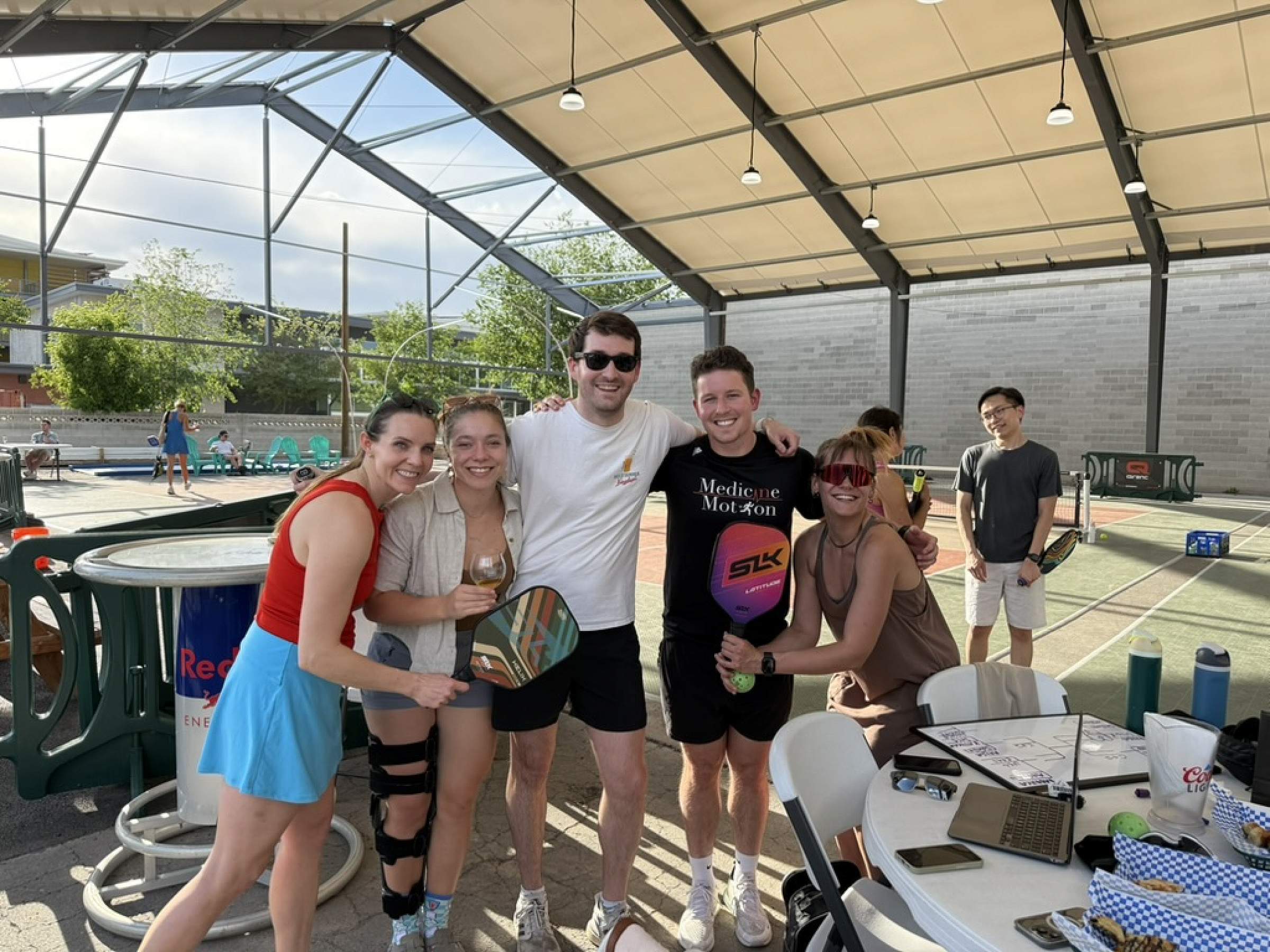
History
The House Model made its debut in January 2022. The Master Blueprint of the model was produced during the MedEdMorphosis envision phase and is built upon the work of hundreds of students, staff, faculty and community partners.
The MedEdMorphosis Change Initiative, developed in early 2021, is “an ambitious five-year plan to re-envision and redesign medical education for the future” (Good Notes - 06.28.21). It aims to provide medical students with experiential learning in medical education, curriculum development, and change management. Students participated in the MedEdMorphosis process through focus groups, working teams, design teams, envisioning teams, and more. They contributed to the thought process, discussion, and design of new and existing medical curricula, programs, and promotion requirements, including the House Model. (resource - Tools Catalog MDID 7215).
The organization and development of the House model continued through 2022 and into 2023. The model was officially launched in August 2023, as a part of the new Mission-Driven MD Program.
Houses were established for several reasons:
- Provide a psychologically safe space for students
- Promote intergenerational and interpersonal learning
- Foster mentorship
- Cultivate professional expectations of identify formation
- Emphasize service
- Create a culture that recognizes healthy social life and playfulness amidst the challenges for medical school
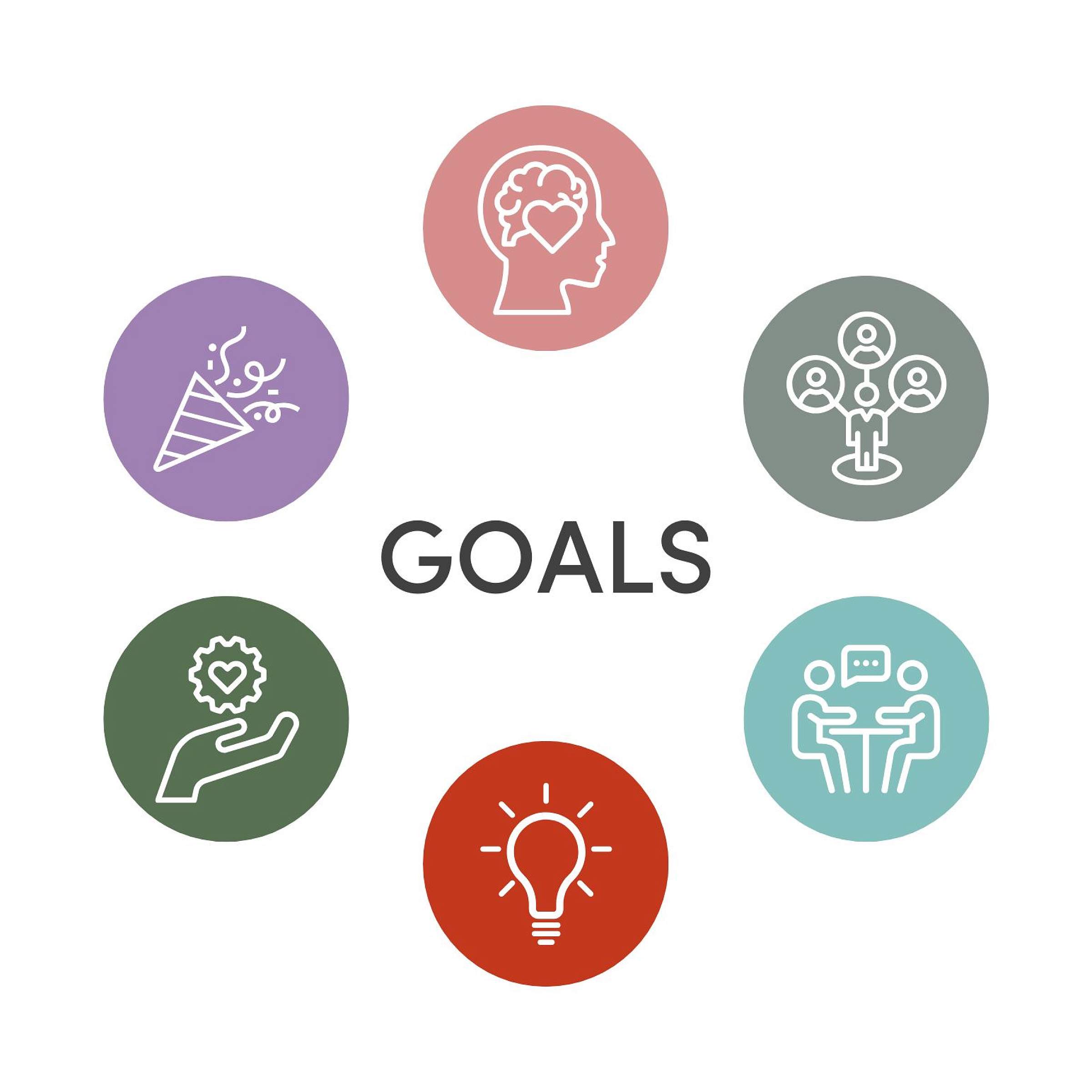
Demographics
Houses
The House Design Team considered multiple factors in determining house size, including the makeup of student-led clinics, resource implications, pedagogy, and physical space. Each House has about 18-24 students per class, with a total of approximately 72-96 students per House.
To cultivate a psychologically safe space for students, we strive to include individuals with varied interests, experiences, and diverse backgrounds. This helps strengthen a culture of equity, diversity, justice, and inclusion, proactively preventing, monitoring, and addressing mistreatment.
Learning Communities
These Houses are further divided into Learning Communities, with approximately 10-12 students per Learning Community and 1-2 faculty cohorts which alternate every other year. These Learning Communities stay together for their student-led clinics, intersessions, Doctoring groups, and other activities throughout the entire four years.
Mentorship
Faculty/Staff Mentorship
Houses are also organized with the aim of fostering community, mentorship, service learning, leadership, and professional identity formation. Education and mentorship have always been priorities of the University, with initiatives such as the Core Educator Model established in 2016. Therefore, Houses have adopted the school’s long-standing tradition of peer mentorship and building a community of educators.
Faculty and staff mentorship play a significant role in the House Model. Students are assigned various faculty and staff mentors, including but not limited to:
- House Faculty Leaders
- House Advisors and Coordinators
- Learning Community Coaches
- Student-Led Clinic Directors
- Problem-Based Learning Facilitators
Plays a key role in fostering community and culture within their House, ensuring students are connected to essential resources and support. They promote professionalism, address issues of mistreatment, and manage administrative responsibilities to help create a positive and productive environment.
Key Roles:
- Faculty Member
- Cultivates house culture
- Provides mentorship and professional connections
- Holistic understanding of student’s progress in the MD program
Connects students to resources, guiding university processes, and advising on events and professional development. They manage logistics, including course scheduling, venue reservations, and budgeting, while fostering community and providing personalized support. Contact Page
Key Roles:
- Student Affairs Staff Member
- Recommended first point of contact
- Extensive institutional knowledge
- Connects students to tailored resources
- Assists with course enrollment and graduation requirements
- Advises on professional development and specialty exploration
Assists with event planning and administrative tasks, ensuring smooth operations. They are the go-to resource for credentialing. Acting as a 'switchboard,' they guide and connect students, faculty, and staff to the resources they need. Contact Page
Key Roles:
- ROADMaP2MD Canvas
- Credentialing
- Events/Food
- ListServs
- Room Reservations
- Travel Reimbursements
Plays a key role in supporting students throughout all four years of medical school by maintaining consistent, longitudinal relationships. Faculty Coaches share weekly teaching and grading responsibilities, meet regularly with students, and ensure they are connected to essential resources and support. They are a trusted source of mentorship and guidance, contributing heavily to a student's professional identity formation.
Key Roles:
- Faculty Member
- Provides consistent mentorship and academic support
- Maintains longitudinal relationships with students
- Monitors and supports student growth across academic and professional domains
- Professional Identity Formation
Student Mentorship
As part of the House Model, students can run for positions in the House Governing Body. Each House has two Student Representatives per class year, who work with directors and advisors to create opportunities and build community with their fellow students. Students are elected into leadership positions within the first month—two for each year per Learning Community, totaling 48 student leaders.
These student leaders advocate for their House to administration, collaborate with class leaders, and lead House activities. They attend monthly leadership meetings, plan quarterly events within a budget, and serve as a point of contact.
They also help build community, serve on student government committees, and encourage connections with House Faculty and Advisors.
Following the pattern of peer mentorship, MS2 students are assigned by House to support and advise newly admitted students. These students have the opportunity to connect throughout all four years of their medical education, incorporating all class years to provide opportunities for intergenerational learning.

A Sports Analogy
Imagine you are watching a football game. Your attention is likely focused on the players who move with precision, each one dedicated to their role. The running back pushes through the defense, while the wide receiver catches the ball and runs down the field. On the other side, the defense works tirelessly to block passes, tackle runners, and disrupt plays, showcasing their strength and agility.
But let your attention shift for a moment to the sidelines. Coaches discuss strategies, and backup players watch the game closely, ready to step in if needed. Cheerleaders perform routines to keep the crowd energized. Medical staff stand by, prepared for any injuries, and fans wave their banners and cheer for their team. Consider how many non-players are on the sideline and watching from the press box. All of these individuals play a role in supporting the players, and many of these roles overlap!
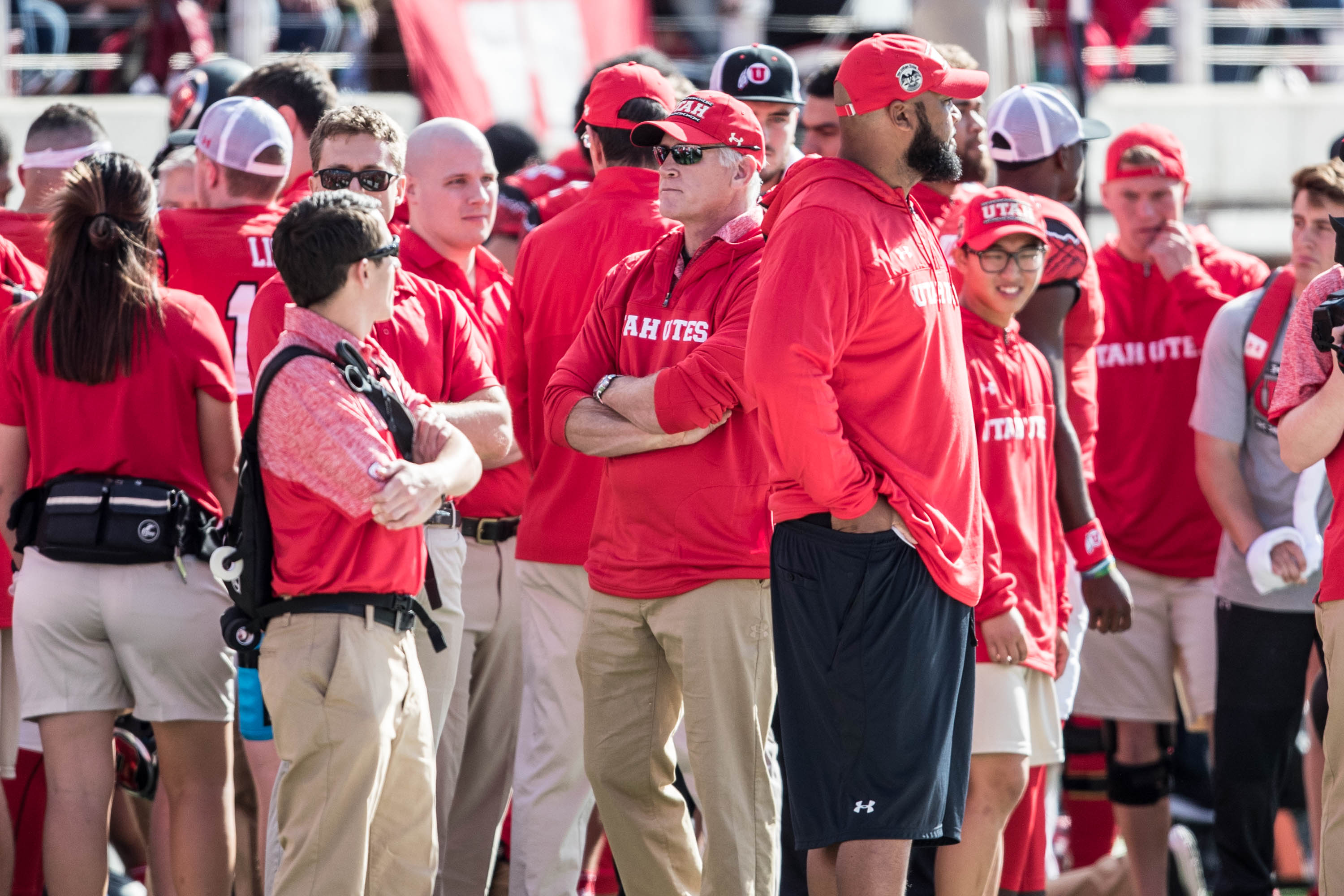
Now, imagine our medical students are the football players. For example, let’s say our student is a running back. On a football team, this running back has a dedicated coach who helps them develop strategies to navigate the defense and gain yardage. For our student, this would be the learning community coach, who guides them on their clinical skills, how to navigate medical school, and supports them in their professional identity formation.
Problem-Based Learning Facilitators are like strategy coaches, helping students prepare for different scenarios. Older students mentor newer ones, similar to seasoned players helping rookies. All these roles are part of the offense, overseen by an offensive coordinator who ensures all parts work together seamlessly. This coordinator is like the students’ House Leaders—Faculty and Advisors who guide them through the curriculum (or offense) and towards graduation. House Coordinators handle administrative needs, like team managers who take care of logistics.
Finally, think of the athletic trainers and team doctors who keep the players in peak condition. For our students, this support comes from our student affairs, academic success, and wellness staff, ensuring they stay healthy and focused throughout their medical education.
Just as a football team relies on a diverse group of coaches, trainers, and support staff to help players succeed on the field, our medical students benefit from a comprehensive support system within the House Model. Each mentor and advisor plays a crucial role in guiding students through their medical education, ensuring they develop the skills, knowledge, and resilience needed to thrive. By fostering a culture of mentorship, community, and professional growth, we prepare our students to become the future leaders of healthcare, ready to tackle any challenge that comes their way.
Engagment
There are a number of engagement opportunities for students within the House.
Medical students kick off their journey during SCoPE — an orientation program filled with dynamic activities designed to spark connection and build community from day one. Students also take part in a House points competition, earning points through academic engagement and team-based games. This friendly, ongoing challenge fosters a healthy sense of competition and encourages participation.
One valued tradition is the creation of House flags — a fun and symbolic activity that fosters teamwork and pride. These flags become rallying symbols during events like the House Olympics, uniting students in friendly competition and shared identity.
These early experiences lay the foundation for lasting friendships, collaborative learning, and a strong sense of belonging that supports students throughout all four years of medical school.
Each House is establishing traditions within their groups, such as holiday parties at student-led clinics, distributing care packages to students entering clerkship year, and hosting Match panel discussions and lunch-and-learn sessions. These activities are planned by both student representatives and directors/advisors, aiming to support students' emotional and mental health and academic success. They include fun activities to promote a healthy social life and playfulness amidst the challenges of medical school, as well as professional development opportunities.
Past activities have included:
- Waffle breakfasts
- Bowling & pizza outings
- Pickleball games
- Mentorship panels
- Skills workshops
Please visit here to learn more about student-led clinics.
Houses are directly assigned to the Student-led Clinics as listed below:
- Coyote Gulch - South Main
- Labyrinth - Rose Park
- Peekaboo - Rose Park
- Little Wild Horse - Midvale
- Red Butte - Midvale and People's Clinic
- Echo - 4th Street
During the first two years of medical school, students are assigned to assignment groups that are intentionally structured within Learning Communities. These collaborative environments foster connection and teamwork while exposing students to diverse perspectives that encourage open-mindedness. At the same time, they help build a strong, supportive network that sustains students throughout their medical journey.
On the curricular level, the House Model was intended to:
- Offer small group learning for foundational knowledge and skills
- Advance clinical knowledge and skills
- Assessment
- Inquiry
- Professional Identity Formation
- Equity, Diversity, Justice, and Inclusion
Intersessions promote the learning of topics that are not sufficiently addressed elsewhere and lend themselves to intergenerational sharing and support. They also provide opportunities to foster professional identity formation and integrate the knowledge and skills emphasized in the health humanities.
During intersessions, students have dedicated time to connect with their House during a shared lunch period. These informal gatherings offer a chance to relax, build relationships, and strengthen their sense of community outside the classroom — reinforcing the supportive environment that underpins their medical education.
Intergenerational Intersessions
Intergenerational Intersessions is a two- to three-day period of protected time when students from all four years of medical school can come together as a full cohort. These gatherings are designed to foster mentorship, strengthen cross-class connections, and build a sense of continuity and community across the entire medical school experience.
As part of their commitment to community engagement, each House also plans and carries out a service project during the year. These projects are often designed to support the neighborhoods surrounding the students’ assigned student-led clinics, encouraging meaningful, place-based service.
Past projects have included:
- Holiday gift drives for local families
- Community surveys to gather feedback and improve clinic services
- Food and book drives to support local schools and shelters
These initiatives not only strengthen students’ ties to the community but also reinforce the values of empathy, service, and social responsibility that are central to their medical education.
House Olympics
In Fall 2024, the school hosted the first Inaugural House Olympics, marking the start of a long-standing tradition of friendly competition among the six Houses. Students organized various events, including kickball, trivia, a spelling bee, a survivor obstacle course, and the wildly popular tug-of-war.
Students from all years participated, proudly wearing their house colors to foster camaraderie and build relationships. First-year students created house flags during their transition to medical school course, which were displayed along the venue to lively music.
The event culminated with the crowning of the winning house, whose name was engraved on the House Cup, symbolizing their victory and setting the stage for future competitions.
Past Winners
2024 - LABYRINTH
2025 - TBD
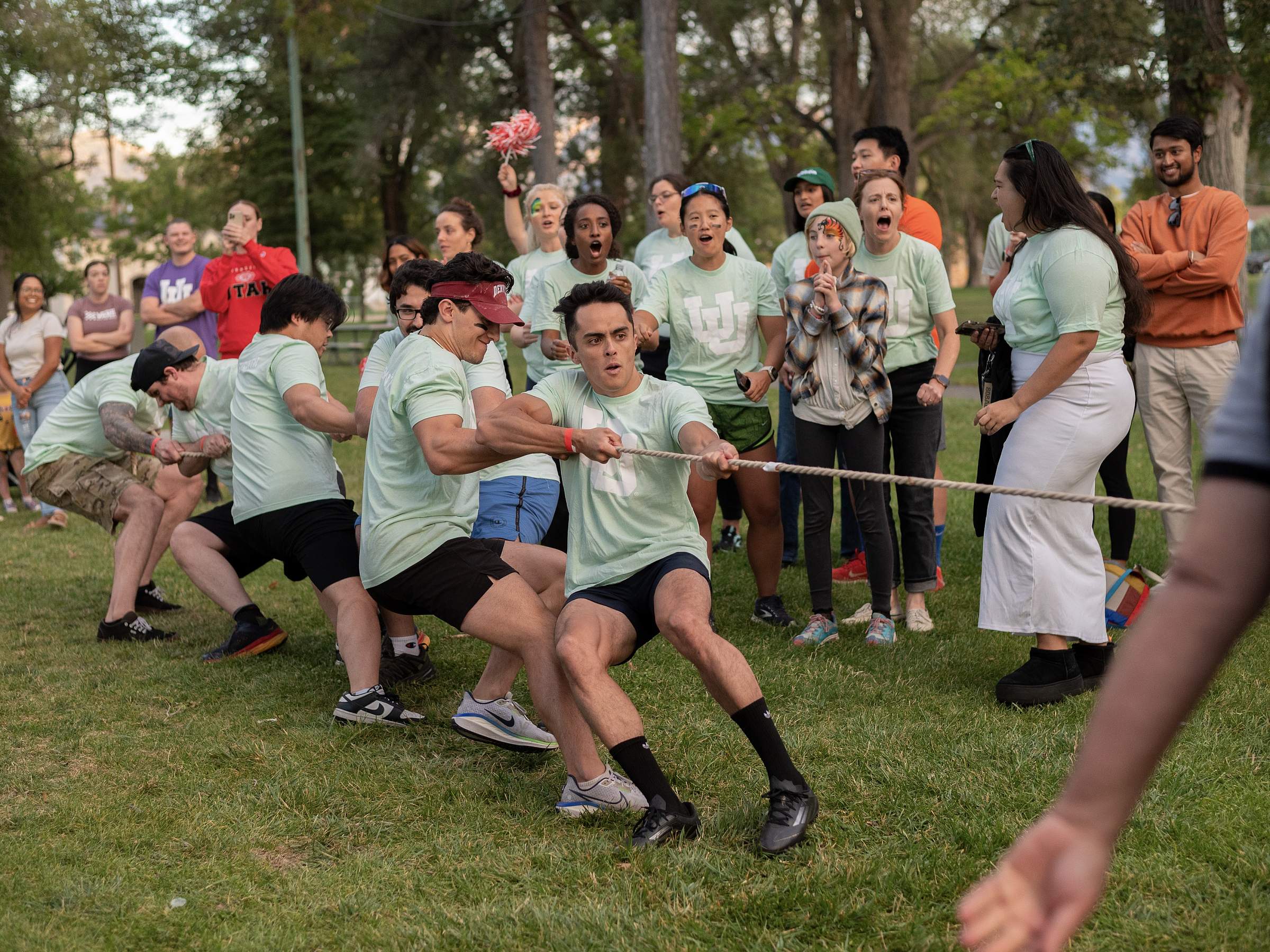
Benefits to the student
The house structure provides numerous benefits to medical students, including:
- Longitudinal Support and Mentoring: Continuous guidance from advisors, faculty, and peers.
- Extracurricular Activities: Opportunities for engagement beyond academics.
- Collaboration and Camaraderie: Promotes teamwork and friendly competition.
- Academic Support: A network of peers and mentors to lean on during challenging times.
- Close-Knit Community: Regular interactions with a supportive group of peers.
- Benefits Intergenerational learning
How to Take Advantage of the House Structure
- Participate in House Activities and Service Projects: Engage in service, events, and competitions and search for intergenerational mentorship opportunities.
- Engage with House Advisor: Seek support and guidance.
- Work with House Director and Learning Community Coach: Focus on professionalism and professional development.




